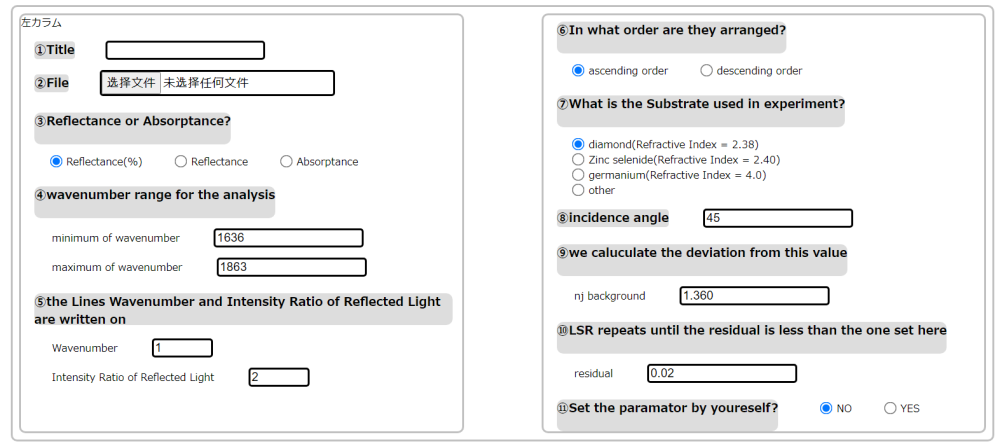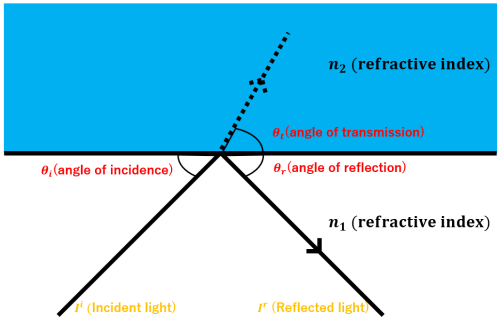「Input」の版間の差分
ナビゲーションに移動
検索に移動
| 15行目: | 15行目: | ||
: Select the type of your ATR-IR data. | : Select the type of your ATR-IR data. | ||
:: Reflectance(%): The Reflectance of ATR-IR spectra in the value of percentage. (Default) | :: Reflectance(%): The Reflectance of ATR-IR spectra in the value of percentage. (Default) | ||
:: Reflectance: The Reflectance of ATR-IR spectra. | :: Reflectance: The Reflectance of ATR-IR spectra. | ||
:: Absorptance: The Absorptance of ATR-IR spectra. | :: Absorptance: The Absorptance of ATR-IR spectra. | ||
: The relationships of each data are | : The relationships of each data are | ||
: <math> Reflectance(%)=Reflectance*100 </math> | :: <math> Reflectance(%)=Reflectance*100 </math> | ||
: <math> Absorptance=-\log_{10}(Reflectance) </math> | :: <math> Absorptance=-\log_{10}(Reflectance) </math> | ||
---- | ---- | ||
2021年12月20日 (月) 08:40時点における版
This is the typical snapshot of the input of ComplexRI. Each part will be explained in the following.
①Title
- Input the title of your job. The output results of ComplexRI will be saved in the excel format with the name @Title.xlsx
②File
- Upload the ATR-IR experimental data in this part. The inside should be like the following.
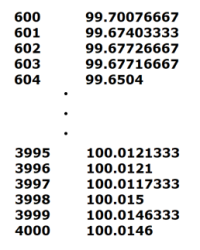
- There are two rules for the format of input file.
- (1). The format of input file must be txt, and the name of the input file must be ***.txt.
- (2). The columns are separated by the space.
③Reflectance or Absorptance?
- Select the type of your ATR-IR data.
- Reflectance(%): The Reflectance of ATR-IR spectra in the value of percentage. (Default)
- Reflectance: The Reflectance of ATR-IR spectra.
- Absorptance: The Absorptance of ATR-IR spectra.
- The relationships of each data are
04:The range of the wavenumber to fit the Reflectance Spectra
- In the input file, there may be all range of the wavenumber and corresponding data obtained from the ATR-IR experiment. Here, you input the range of the wavenumber to fit the reflectance spectra. ComplexRI execute the fitting only in the range you input here.
- The default is set to from 1636 to 1863.
05:The columns to use for analysis in the Input file
In the input file, there may be some columns of the wavenumber and corresponding data obtained from the ATR-IR experiment, but the columns necessary for the fitting is only two.
- First, it is the wavenumber, and second, it is the representative absorptance or reflectance corresponding the former.
- For example, there is the input file like below.(You can download this file from Manual Page in ComplexRI. The file name is File03)
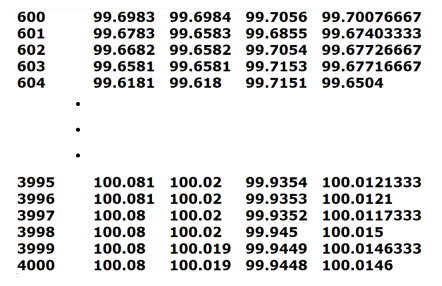
- There are five columns. The first is the wavenumber, the others are all reflectance. The fifth is average of the second, the third and the forth. In this situation, when you input like below, you can get the better fitting result.
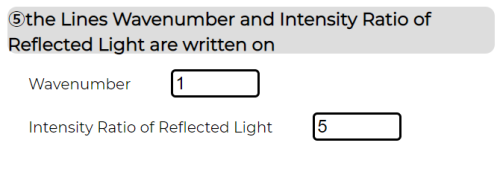
- The default is set to the wavenumber to the first column and the reflectance or the absorptance to second column respectively.
06:The order of data in the input file, ascending order or descending order?
- You should input how the data is ordered in the input file. There are two patterns, ascending order or descending order. They are like below. The left is ascending, and the right is descending.

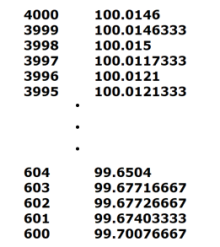
- The default is set to the descending order.
07:The kinds of the substrate used in the ATR-IR experiment
- You should input the refractive index of the substrate you use in the ATR-IR experiment.
- This value is the in the above picture.
- Here, we prepare the three substrates often used.
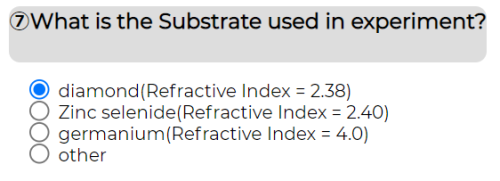
- So, if there is the substrate you use, you only have to select the substrate name. It gives the corresponding refractive index. The values are written in the parenthesis next to the substrate name.
- Otherwise, you should select other and, input the refractive index manually.
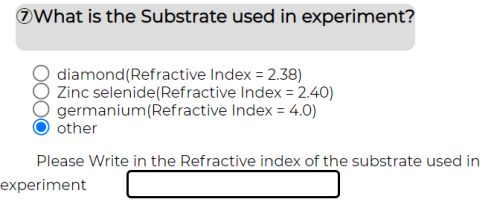
- You can also use this option, when you want to input the refractive index strictly against the three substrates often used.
08:Angle of incidence of IR light
- You should input the angle of incidence of IR light.
- That is in the above picture.
- The default is set to 45 degree.
09:Refractive index without dispersion
- You should input the refractive index without dispersion. This value is derived from the cauchys equation showed below.
This value usually converges in the IR region. So, you can get this value by substitution of appropriate and parameter corresponding to the substrate for the above equation.
- The default is set to 1.360.
10:How strictly you fit the Reflectance Spectra ?
- The value input here is used to judge if the fitting of reflectance spectra should finish. The detail is written in the explanation01 of Internal processing.
- The defalut is set to 0.02.
- notice!! If this value is too small, fitting cannot finish.
11:How to set the parameter of the fitting function
- Here, you can select whether you decide the parameter of fitting functions. We use a set of Lorentz functions for fitting of Reflectance spectra as mentioned in the
explanation01 of Internal processing . Fitting function is like below.
- The default is set to “NO” like below.

- In this pattern, the parameters are assigned automatically.
- If you select “YES” like below.

- The new input fields are set, and you should give the number of Lorentz functions like below. The maximum of the number is 7.

- Above, the number is set to 1. So, the one set of three parameters of Lorentz function is need to input. init_A1, init_N1 and init_G1 are the amplitude, peak wavenumber, and bandwidth of Lorentz function, respectively.
